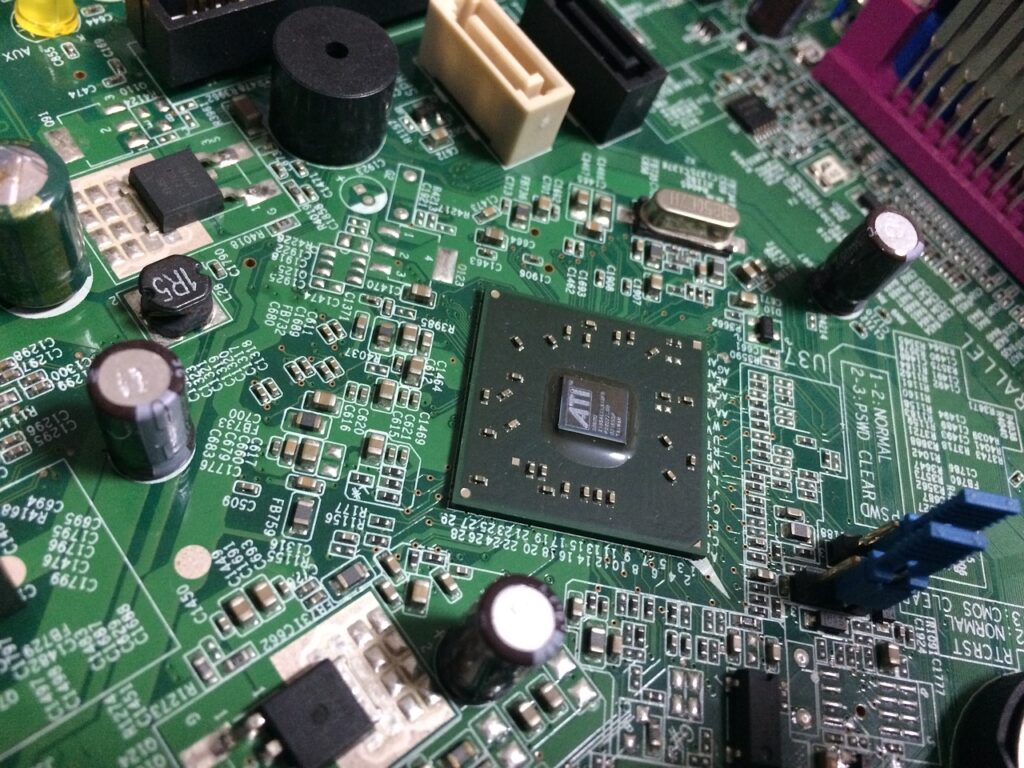Semiconductor Chip Technology: Revolutionizing the Digital World – Semiconductor chip technology has become an indispensable part of our digital lives, powering a vast array of electronic devices and systems that we rely on daily. From smartphones to computers, from medical equipment to automotive systems, semiconductor chips play a crucial role in modern technology. In this article, we’ll delve into the world of semiconductor chip technology, exploring its history, workings, applications, challenges, and future prospects.
History of Semiconductor Chips

The journey of semiconductor chips began with humble origins in the mid-20th century. Early developments in semiconductor physics laid the groundwork for the invention of the transistor in the late 1940s, a breakthrough that revolutionized electronics. Major milestones followed, including the development of integrated circuits in the 1960s and the advent of microprocessors in the 1970s, which paved the way for the digital age.
How Semiconductor Chips Work
At the heart of semiconductor chip technology lies the principles of semiconductor physics. These chips are made from materials such as silicon, which can conduct electricity under certain conditions. The manufacturing process involves intricate steps of doping, etching, and layering to create tiny components such as transistors and diodes, which form the building blocks of electronic circuits.
Applications of Semiconductor Chips
Semiconductor chips find applications across various industries, driving innovation and advancement. In the electronics industry, they power devices ranging from smartphones and tablets to smart TVs and wearable gadgets. In computing devices, microprocessors and memory chips enable the processing and storage of vast amounts of data. Telecommunications networks rely on semiconductor chips for signal processing and data transmission, while the automotive industry incorporates them into vehicles for enhanced performance and connectivity.
Challenges and Innovations in Semiconductor Chip Technology
Despite their ubiquity, semiconductor chips face challenges related to the limits of miniaturization and power consumption. Moore’s Law, which predicts the doubling of transistor density on chips every two years, has guided the industry for decades but is now approaching its physical limits. Innovations such as 3D chip stacking and advanced materials offer potential solutions, along with research into emerging technologies like quantum computing and neuromorphic computing.
Future Trends in Semiconductor Chip Technology
Looking ahead, the future of semiconductor chip technology holds exciting possibilities. Quantum computing promises to revolutionize computation by harnessing the principles of quantum mechanics, while neuromorphic computing aims to mimic the brain’s neural networks for more efficient processing. The Internet of Things (IoT) will further expand the reach of semiconductor chips, connecting everyday objects to the digital world.
Impact of Semiconductor Chip Technology on Society
The widespread adoption of semiconductor chips has had a profound impact on society, driving economic growth, transforming industries, and shaping our daily lives. From enabling global communication networks to powering advances in healthcare and transportation, semiconductor chips have become indispensable tools for progress. However, their production also raises environmental concerns, prompting efforts to develop more sustainable manufacturing processes.
Conclusion
In conclusion, semiconductor chip technology has emerged as a cornerstone of the digital revolution, fueling innovation and driving progress across diverse fields. As we continue to push the boundaries of what is possible, the future of semiconductor chips holds promise for even greater advancements, shaping the world we live in for years to come.
FAQs:
- What are semiconductor chips made of?
- Semiconductor chips are typically made from materials such as silicon, which can conduct electricity under certain conditions.
- What is Moore’s Law, and why is it important in semiconductor chip technology?
- Moore’s Law predicts that the number of transistors on a semiconductor chip will double approximately every two years, driving advancements in computing power and performance.
- What are some emerging technologies in semiconductor chip technology?
- Emerging technologies in semiconductor chip technology include quantum computing, neuromorphic computing, and the Internet of Things (IoT).
- What challenges does the semiconductor chip industry face?
- The semiconductor chip industry faces challenges related to the limits of miniaturization, power consumption, and environmental sustainability.
- How do semiconductor chips impact society?
- Semiconductor chips have a profound impact on society, driving economic growth, transforming industries, and shaping daily life through their applications in various technologies.



